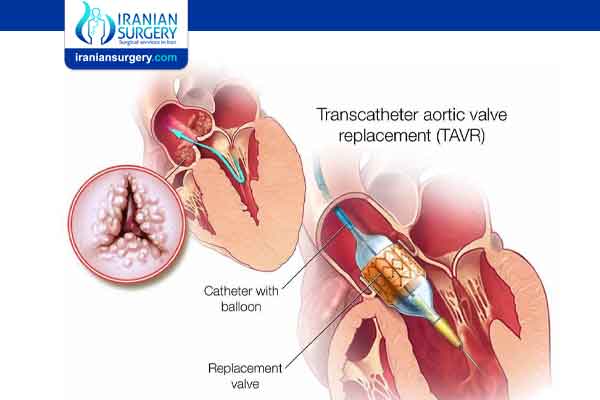Mitral Valve Replacement Procedure
Mitral Valve Replacement Procedure
The mitral valve is located on the left side of the heart. It serves as an inflow valve. Its job is to allow blood from the left atrium to flow into the left ventricle. Surgery may be required if the valve doesn’t fully open or completely close. When the valve is too narrow, it can make it difficult for blood to enter. This can cause it to back up, causing pressure in the lungs. When the valve doesn’t close properly, blood can leak back into the lungs. This can be due to a congenital defect, infection, or a degenerative disease.
The defective valve will be replaced with either a metal artificial valve or a biological valve. The metal valve will last a lifetime but requires you to take blood thinners. The biological valve lasts between 15 to 20 years, and you won’t be required to take medication that thins your blood. The five-year survival rate is about 91 percent. The following also play a role in survival rate:
. your age
. your overall health
. other medical conditions you have
. your heart function
Ask your doctor to help assess your personal risks.
Surgical Heart Valve Replacement Procedure
In most cases, heart valve replacement is an open-heart operation. This means the surgeon opens your chest and heart to remove the damaged valve. In some cases, the valve can be replaced through a small incision near the breastbone (sternum) or under your right chest muscle. This is called minimally invasive surgery.
To help you prepare for the procedure, your doctor may suggest:
. Talking with different members of the surgical team, such as the anesthesiologist, surgeon, cardiologist, respiratory therapist, and nurses
. Discussing the details of the operation with family members
. Visiting the intensive care unit (ICU) where you may be sent for postoperative recovery
During The Surgical Heart Valve Replacement Procedure
During the procedure, the surgeon opens your chest to get to your heart and the diseased valve. The procedure varies from patient to patient, lasting a minimum of two hours and often longer. During this time, you are asleep under general anesthesia.
The surgeon will remove any tissue and calcium deposits that are interfering with the normal function of the valve. Your damaged valve may be completely removed. Then, the new valve will be sewn into the space where your own valve used to be. After the surgeon makes sure your valve is working properly, blood flow will be restored to your heart and the incisions will be closed. Your surgery is performed while the function of your heart is taken over by a heart-lung machine called cardiopulmonary bypass or CPB.
Procedural Overview of a Typical Open-Heart Surgery
. General anesthesia will be administered so that you remain asleep and pain-free during the procedure.
. After preparation, an incision to access your heart is made.
. You will be connected to a heart-lung machine to isolate the heart. Your heart is stopped.
. The old valve is removed.
. A new valve is placed.
. Your newly replaced heart valve will begin working. This happens before weaned from CPB. The doctor will conduct a test to confirm the valve is working properly.
. You are then weaned from cardiopulmonary bypass.
. All incisions are closed.
You are then transferred to ICU and kept on a ventilator until you can fully breath on your own.
After The Surgical Heart Valve Replacement Procedure
When your heart valve has been replaced and the surgery is completed, your heart will be beating on its own and all incisions will be sewn or stapled closed.
Following the surgery, you'll spend some time in the ICU, where you will be closely monitored to make sure there are no complications. Family and friends will be able to visit while you are in the ICU.
Recovery From Surgical Heart Valve Replacement
In the ICU, the staff will keep a close watch on your heart rate, temperature, blood pressure, and other vital body signs. You may feel a little uncomfortable because of all the monitoring equipment attached to you. The nurses will try to keep you as comfortable as possible. Friends and family are usually welcome to visit you.
When intensive care monitoring is no longer needed, you'll be moved to a regular hospital room. Typically, you may be in the hospital for three to 10 days, depending on how quickly you recover.
Checkups And Monitoring
After you're released from the hospital, you will have to see your doctor for follow-up visits. During these visits, your doctor may order lab tests, such as an echocardiogram, an x-ray, or an electrocardiogram, to make sure you are healing properly.
If you're taking anticoagulants, you need to have regular blood tests to monitor your dosage. You'll usually go periodically to a hospital, doctor's office, or laboratory to have these tests done.
About Iranian Surgery
Iranian surgery is an online medical tourism platform where you can find the best heart surgeons in Iran. The price of Mitral Valve Replacement in Iran can vary according to each individual’s case and will be determined by an in-person assessment with the doctor.
For more information about the cost of Mitral Valve Replacement in Iran and to schedule an appointment in advance, you can contact Iranian Surgery consultants via WhatsApp number 0098 901 929 0946. This service is completely free.
Source:
https://www.healthline.com/health/heart-disease/valve-replacement-surgery#the-procedure
https://www.medtronic.com/us-en/patients/treatments-therapies/surgical-heart-valve-repair-and-replacement/aortic-and-mitral-valve-replacement/surgery-what-to-expect.html


